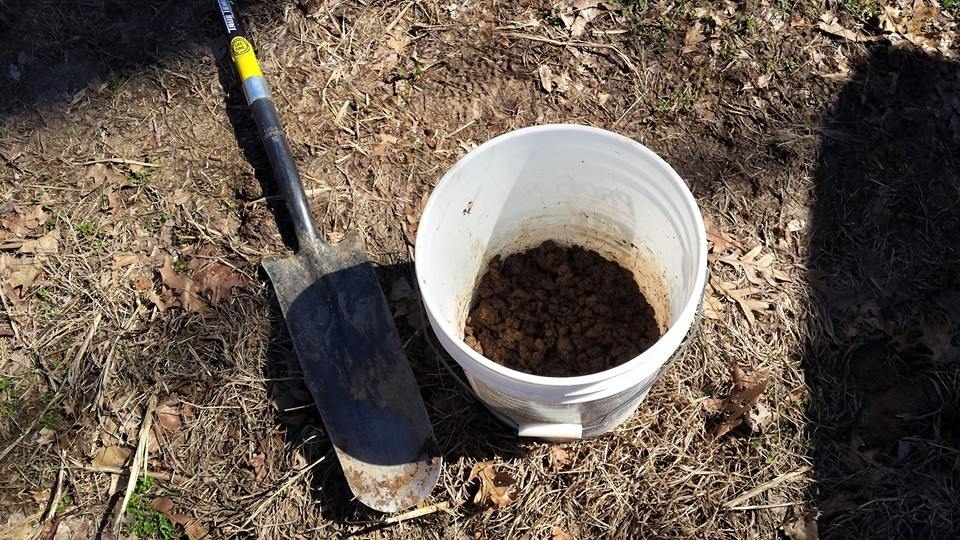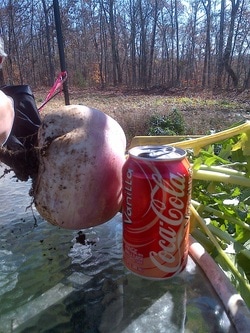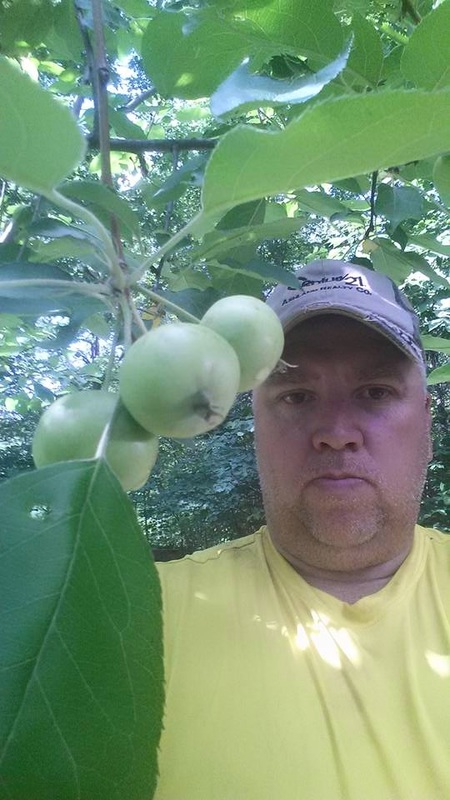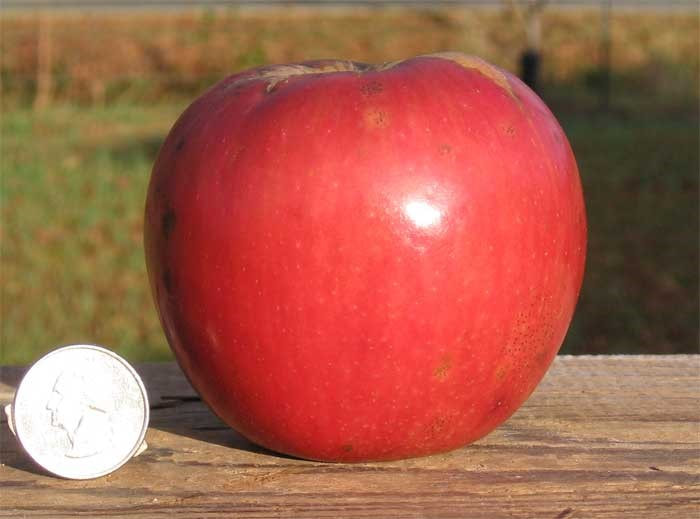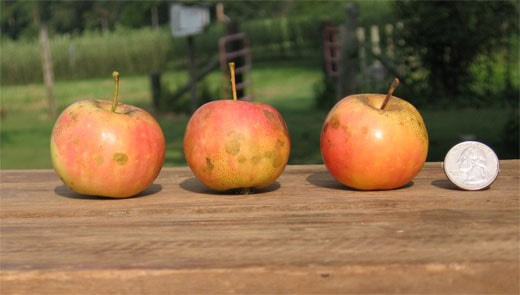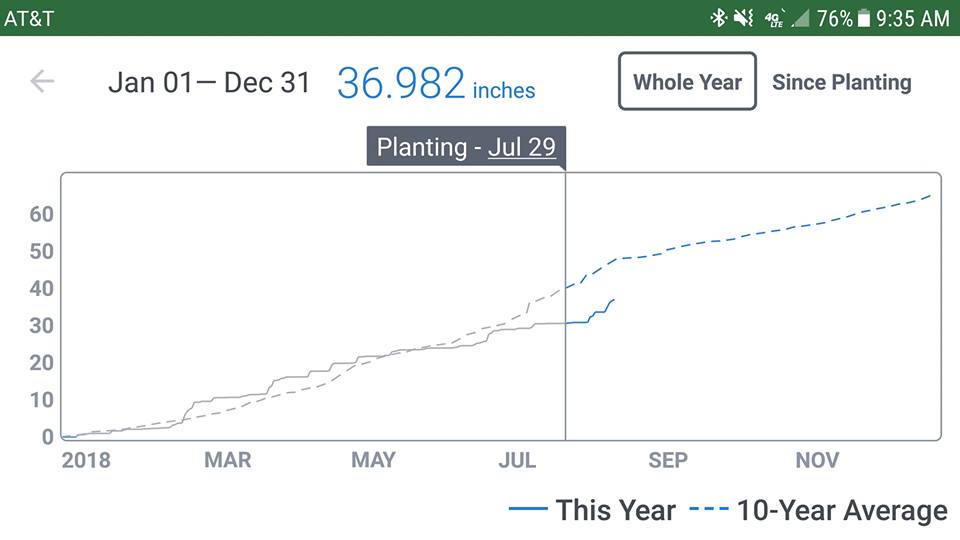Like North American Wildlife & Habitat on Facebook
Order the book on Amazon - http://a.co/hu15aBd
Food Plot Layouts using Colored Marking Tape for wood piles and openings
Dozer Work - 2008
EDGE FEATHERING
Soil and Deer
Just in case you don't get it. Their is only one step between the Soil and your Deer. Videos are about Soil health in farming but this rolls directly into habitat management for wildlife. Why we habitat managers for wildlife should not be disking your food plots.
2008 Soil Test for Five Areas
2009 Soil Test for Five Areas
2012 Soil Test for 4 Areas - Campsite food source taken out of testing
2015 Soil Test for 4 Areas
Soil Comparison Results over time for each area
Antler Dirt
MISSOURI FARMERS – COVER CROPS
By: Allen “horntagger” Morris
What use to be a must for food plotters is starting to change the landscape here in Missouri and across the nation. Most serious food plotters and wildlife land managers have planted grains, legumes and brassicas planted in August for late season food plots. The deer will hammer these food plots when the first frost really hits and then when the acorns come to end like they are right now, they will mow down a food plot as a primary food source.
But farmers are changing the landscape and you are starting to see them on the side of the road if you travel to Cape Girardeau you will see the farmer has cover crops between Notre Dame High School and Wal-Mart on Route K. Those fields where corn and soybeans and now have cover crops planted in them.
For farmers cover crops are planted between the cash crops seasons which give the soil cover during the winter months. The information on cover crops are common place on the internet for farmers today.
Why Grow COVER CROPS
The studies have shown that these cover crops also known as GREEN MANURE help protect the soil, from erosion and water runoff, and wind and water quality, reduce chemical cost by suppressing weeds, and increase yields and bonus for us hunters it increases forage availability when it is at the lowest time of year and improve the wildlife habitat during the hard winter months.
From professional farming community - Cover crops are an important part of an organic crop rotation and are vital for improving and maintaining good soil health. Research has shown that cover crops can:
In a 3rd year in a row survey of 1,200 farmers across the county revealed that cover crops boosted corn yields last year by an average of 3.66 bushels per acre or 2.1 percent. It also increased soybeans by an average of 2.10 bushels per acre or 4.2 percent this was the third year in a row of additional yield increased following cover crops. But in some cases, increase of 10 percent in yield was also noted.
Now Missouri is behind the curve because in March of 2016 - The Missouri Department of Agriculture has announced it will receive $2.4 million to expand the use of no-till and cover crops in Missouri as part of USDA’s Regional Conservation Partnership Program (RCPP). The funds will be used to assist Missouri farmers and ranchers plant 20,000 acres in cover crops annually.
When you look at Iowa in 2009 fewer than 10,000 acres where planted in cover crops and in 2016 over 300,000 acres planted in cover crops and 1 in 4 farmers in Iowa are now planting cover crops.
What does this mean for whitetail hunters?
http://crops.missouri.edu/covercrops/ is a great resource to start looking into a COVER CROP after your corn and soybeans next season. If you are a hunter that hunts on a farmer ground you might want to pass this information on to them.
By: Allen “horntagger” Morris
What use to be a must for food plotters is starting to change the landscape here in Missouri and across the nation. Most serious food plotters and wildlife land managers have planted grains, legumes and brassicas planted in August for late season food plots. The deer will hammer these food plots when the first frost really hits and then when the acorns come to end like they are right now, they will mow down a food plot as a primary food source.
But farmers are changing the landscape and you are starting to see them on the side of the road if you travel to Cape Girardeau you will see the farmer has cover crops between Notre Dame High School and Wal-Mart on Route K. Those fields where corn and soybeans and now have cover crops planted in them.
For farmers cover crops are planted between the cash crops seasons which give the soil cover during the winter months. The information on cover crops are common place on the internet for farmers today.
Why Grow COVER CROPS
The studies have shown that these cover crops also known as GREEN MANURE help protect the soil, from erosion and water runoff, and wind and water quality, reduce chemical cost by suppressing weeds, and increase yields and bonus for us hunters it increases forage availability when it is at the lowest time of year and improve the wildlife habitat during the hard winter months.
From professional farming community - Cover crops are an important part of an organic crop rotation and are vital for improving and maintaining good soil health. Research has shown that cover crops can:
- Reduce erosion and water runoff from agricultural fields by intercepting raindrops and increasing infiltration
- Promote microbial biomass and activities involved in decomposition, leading to increased carbon retention in soil
- Increase soil aggregate stability, total porosity, and plant available water
- Increase hydraulic conductivity and soil water holding capacity
- Reduce bulk density
- Control weeds
- Take up nutrients that might otherwise be lost through leaching or denitrification
- Provide nutrients for a succeeding crop
In a 3rd year in a row survey of 1,200 farmers across the county revealed that cover crops boosted corn yields last year by an average of 3.66 bushels per acre or 2.1 percent. It also increased soybeans by an average of 2.10 bushels per acre or 4.2 percent this was the third year in a row of additional yield increased following cover crops. But in some cases, increase of 10 percent in yield was also noted.
Now Missouri is behind the curve because in March of 2016 - The Missouri Department of Agriculture has announced it will receive $2.4 million to expand the use of no-till and cover crops in Missouri as part of USDA’s Regional Conservation Partnership Program (RCPP). The funds will be used to assist Missouri farmers and ranchers plant 20,000 acres in cover crops annually.
When you look at Iowa in 2009 fewer than 10,000 acres where planted in cover crops and in 2016 over 300,000 acres planted in cover crops and 1 in 4 farmers in Iowa are now planting cover crops.
What does this mean for whitetail hunters?
- During the fall season deer movement, may change because the deer do not have to leave to find food.
- During the winter months when stress is high for whitetails they will have new food source and will go into the spring healthier, which means bigger fawn weight with higher survival rates and large bigger bodies on bucks which in turns means larger antlers next fall.
http://crops.missouri.edu/covercrops/ is a great resource to start looking into a COVER CROP after your corn and soybeans next season. If you are a hunter that hunts on a farmer ground you might want to pass this information on to them.
Rape, Radish, Turnips and Brassicas
With the lack of acorns in some season that occur in Missouri your late season food source become a key factor in management of you whitetail deer herd on you property and also can increase your chance for late season hunting.
Turnips are just one type of last season food source. They love them green tops after the a few days have heavy frost
Turnips are just one type of last season food source. They love them green tops after the a few days have heavy frost
Apples another great source of food in the early fall
Plant Apple Orchard - November 2009
I recommend that you look at Century Farm Orchard for apple trees. They sell hundreds of varieties of heritage/vintage trees. Apples that you can't buy in a store and are much better apples. Their website lists trees by ripening times, so you can have trees that drop apples in June, to get deer coming early, and trees that drop apples through hunting season. If you want to see apples in the next 10 years, buy grafted trees. Standard size trees take years to produce an apple. I recommend semi dwarf trees.
Always buy trees by caliper size. Let me say that again, always by trees by caliper size ½ is a good size, and, buy grafted trees. That will give you a tree that will produce apples quickly.
Also, you might consider apple trees that are resistant to Cedar Apple Rust. Arkansas Black is Cedar Apple Rust resistant and holds its apples through deer season.
Apple Tree Ordered
http://www.centuryfarmorchards.com/
They tell me they have plenty of Va. Beauty and Arkansas Black available. So, I order 4 of each.
They did recommend Hewes Crab for a pollinator as it blooms over a longer period of time and produces better fruit. I order two of each grafted.
Also they tell me if this year's trees are like past years, they will be much larger than 1/2" in caliper.
No Deposit and going to mail an invoice in October.
Shipping estimated of $16 and $20 for the entire shipment.
Order came in planted them Thursday before deer season and they came with planting instructions.
Always buy trees by caliper size. Let me say that again, always by trees by caliper size ½ is a good size, and, buy grafted trees. That will give you a tree that will produce apples quickly.
Also, you might consider apple trees that are resistant to Cedar Apple Rust. Arkansas Black is Cedar Apple Rust resistant and holds its apples through deer season.
Apple Tree Ordered
http://www.centuryfarmorchards.com/
They tell me they have plenty of Va. Beauty and Arkansas Black available. So, I order 4 of each.
They did recommend Hewes Crab for a pollinator as it blooms over a longer period of time and produces better fruit. I order two of each grafted.
Also they tell me if this year's trees are like past years, they will be much larger than 1/2" in caliper.
No Deposit and going to mail an invoice in October.
Shipping estimated of $16 and $20 for the entire shipment.
Order came in planted them Thursday before deer season and they came with planting instructions.
Late September to mid-October
Virginia Beauty....Mildly Sweet Firm Eating and Cooking Good About 1810
The original tree grew before 1820 in what is today Carroll County in southwestern Virginia. The name implies an attractive apple, but it is also an excellent eating and dessert apple. In 1914, F. H. LaBaume, a Virginia farmer and fruit grower, wrote to the United States Department of Agriculture saying of the Va. Beauty; “ It has a distinctive flavor all of its own that clings to the palate and lingers in the memory for a lifetime.” The tree is known for producing wide branching angles, a trait that aids in producing proper tree structure. Fruit is medium to large with a glossy red or purplish color. Its flesh is greenish-yellow, fine grained, tender, juicy, sweet, and mildly subacid. Ripens in October.
Virginia Beauty....Mildly Sweet Firm Eating and Cooking Good About 1810
The original tree grew before 1820 in what is today Carroll County in southwestern Virginia. The name implies an attractive apple, but it is also an excellent eating and dessert apple. In 1914, F. H. LaBaume, a Virginia farmer and fruit grower, wrote to the United States Department of Agriculture saying of the Va. Beauty; “ It has a distinctive flavor all of its own that clings to the palate and lingers in the memory for a lifetime.” The tree is known for producing wide branching angles, a trait that aids in producing proper tree structure. Fruit is medium to large with a glossy red or purplish color. Its flesh is greenish-yellow, fine grained, tender, juicy, sweet, and mildly subacid. Ripens in October.
Mid-October to late-November
Arkansas Black.....Mildly Sweet Firm Eat, Cook, Storage Good About 1870
Arkansas Black: Originated in Arkansas around 1870. This apple is a good keeper and can best be described as “hard as a brick”. The tree is quite disease resistant. The fruit is a reddish-purple, almost black, with a hard, yellow, crisp flesh. The fruit begins ripening in late October and can be stored well into the winter months.
Hewes Crab (Virginia Crab): This apple originated in Virginia, most likely during the early 1700’s. Its taste is unique. In most of the south, it is the finest cider apple. It makes a dry cider that is usually mixed with other varieties. Both George Washington and Thomas Jefferson knew this apple’s qualities quite well. The fruit is very small, green with a dull red, and a flesh that is firm and acidic. Ripe in September.
2018 Apple Orchard
Always trim my trees the beginning of March and Fertilize at the end of March.
Seed Company Specific for Food Plots
By: Allen “Horntagger” Morris
Your just not stuck with what you find locally for seed for food plots, so get out of the rut. Corn, Soybeans, Grain Sorghum, Sunflowers, Wheat and Purple Top Turnips – Seed mixes do have their part to play – You may not need to buy a whole bag, but some companies sell by the lb. also. Start thinking outside the box.
Now don’t get me wrong some companies locally can order seed and are dealers and you can order seed thru them. Also remember you will have to pay shipping and for seed that typical cost a lot.
www.petcherseeds.com – Petcher Seed – Fruitdale, Alabama – Great source for Sunn Hemp and other cover crops
www.eagleseed.com – Eagle Seed – Weiner, Arkansas - The Only Glyphosate forage soybean on the market
www.welterseed.com – Welter Seed and Honey Company – Onslow, Iowa - Great source for a lot of different seeds Barkant Forage Turnips, Appin Forage Turnips, Bonar Rape Seed, T-Raptor Hybrid Forage Brassica and Daikon Radishes and Crimson Clover
www.ljrogerswildlifeseeds.com – L. J. Rogers Wildlife Seeds – West Memphis, Arkansas - Tyrone Forage Soybeans
www.missourisouthernseed.com – Missouri Southern Seed – Rolla, Missouri - Forage Sorghum, Lab Lab, Egyptian Wheat, and Fridge Triticale
www.foragesoybeans.com – Specialty Seed Company - Anguilla, Mississippi - Derry Forage Soybeans, Quail Haven Re Seeding Soybeans, Tara Forage Soybeans,
Couple additional sources when other might be sold out of the seed you’re looking for.
www.hancockseed.com – Hancock Seed Company – Dade City, Florida
www.oakhavenforages.com – Oak Haven Forages – Coldwater, Mississippi
SOIL IMPROVEMENTS
Looking for soil improvements – You might need to go pick this material up to save yourself some money.
www.antlerdirt.com – Antler Dirt – Cadiz, Kentucky - Composted Chicken Litter
www.greengardenscompost.com – BFC Composting – Perryville, Missouri - High Quality Soil Compost
Your just not stuck with what you find locally for seed for food plots, so get out of the rut. Corn, Soybeans, Grain Sorghum, Sunflowers, Wheat and Purple Top Turnips – Seed mixes do have their part to play – You may not need to buy a whole bag, but some companies sell by the lb. also. Start thinking outside the box.
Now don’t get me wrong some companies locally can order seed and are dealers and you can order seed thru them. Also remember you will have to pay shipping and for seed that typical cost a lot.
www.petcherseeds.com – Petcher Seed – Fruitdale, Alabama – Great source for Sunn Hemp and other cover crops
www.eagleseed.com – Eagle Seed – Weiner, Arkansas - The Only Glyphosate forage soybean on the market
www.welterseed.com – Welter Seed and Honey Company – Onslow, Iowa - Great source for a lot of different seeds Barkant Forage Turnips, Appin Forage Turnips, Bonar Rape Seed, T-Raptor Hybrid Forage Brassica and Daikon Radishes and Crimson Clover
www.ljrogerswildlifeseeds.com – L. J. Rogers Wildlife Seeds – West Memphis, Arkansas - Tyrone Forage Soybeans
www.missourisouthernseed.com – Missouri Southern Seed – Rolla, Missouri - Forage Sorghum, Lab Lab, Egyptian Wheat, and Fridge Triticale
www.foragesoybeans.com – Specialty Seed Company - Anguilla, Mississippi - Derry Forage Soybeans, Quail Haven Re Seeding Soybeans, Tara Forage Soybeans,
Couple additional sources when other might be sold out of the seed you’re looking for.
www.hancockseed.com – Hancock Seed Company – Dade City, Florida
www.oakhavenforages.com – Oak Haven Forages – Coldwater, Mississippi
SOIL IMPROVEMENTS
Looking for soil improvements – You might need to go pick this material up to save yourself some money.
www.antlerdirt.com – Antler Dirt – Cadiz, Kentucky - Composted Chicken Litter
www.greengardenscompost.com – BFC Composting – Perryville, Missouri - High Quality Soil Compost
